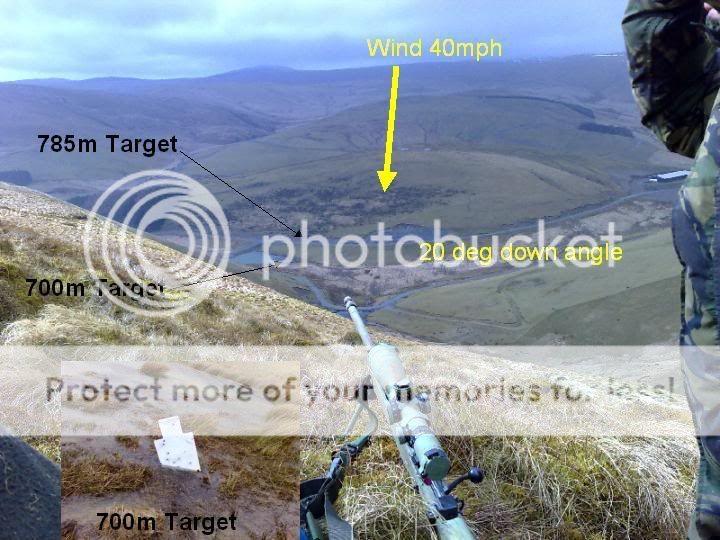JBM
Well-Known Member
[ QUOTE ]
Well, I am...
A question, though. On that page, your unit vectors v (=no cant) and v'(=with cant) both start in the origin of your X,Y,Z coordinate system, right?
But when canting, i.e. rotating the bore around the sight line, the muzzle of the rifle (=the origin of your XYZ coordinate system) moves as well.
[/ QUOTE ]
Absolutely the muzzle moves. It's not shown here, because I'm only interested in the direction, not offset (in this case). You're right in that you still have to find the offset and add that to any change.
[ QUOTE ]
Going to extremes to show what I mean: if you have 2" between the bore and the scope, and rotate 180 degr, the bullet starts 2" ABOVE the sight line, not below.
So, yes, the Az and El angles change, but so does the location of the muzzle.
Or do you take this into account in another way?
[/ QUOTE ]
In my ballistics programs it is taken into account by using the starting point of the bullet as a vector r0 = [-sight offset, 0.0, -sight height]. The initial velocity is taken as a rotated velocity vector and in doing that you only worry about direction since the integration routines start from the point r0. The formulas I derived were meant to provide a new elevation and azimuth angle that could be used to adjust a trajectory. You are absolutely right that you have to worry about the change in r0, but it is small. For small cant angles it would negligible. Even for a 10 degree cant the error in the X direction (cross wind) is only 0.3".
JBM
Well, I am...
A question, though. On that page, your unit vectors v (=no cant) and v'(=with cant) both start in the origin of your X,Y,Z coordinate system, right?
But when canting, i.e. rotating the bore around the sight line, the muzzle of the rifle (=the origin of your XYZ coordinate system) moves as well.
[/ QUOTE ]
Absolutely the muzzle moves. It's not shown here, because I'm only interested in the direction, not offset (in this case). You're right in that you still have to find the offset and add that to any change.
[ QUOTE ]
Going to extremes to show what I mean: if you have 2" between the bore and the scope, and rotate 180 degr, the bullet starts 2" ABOVE the sight line, not below.
So, yes, the Az and El angles change, but so does the location of the muzzle.
Or do you take this into account in another way?
[/ QUOTE ]
In my ballistics programs it is taken into account by using the starting point of the bullet as a vector r0 = [-sight offset, 0.0, -sight height]. The initial velocity is taken as a rotated velocity vector and in doing that you only worry about direction since the integration routines start from the point r0. The formulas I derived were meant to provide a new elevation and azimuth angle that could be used to adjust a trajectory. You are absolutely right that you have to worry about the change in r0, but it is small. For small cant angles it would negligible. Even for a 10 degree cant the error in the X direction (cross wind) is only 0.3".
JBM


